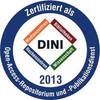PDF, English
 Restricted access: Repository staff only until 14 August 2026. Restricted access: Repository staff only until 14 August 2026.
Login+Download (10MB) | Terms of use |
Abstract
Malaria threatened 263 million people globally in 2024 and is disproportionately prevalent in Africa, where the majority (94%) of deaths were reported, most of which were children. Insecticides are the most successful malaria control tools, but resistance (IR) to these compounds is now widespread throughout African Anopheline populations. Mutations in the insecticide target sites, and detoxification of insecticides through metabolic breakdown and clearance, are largely responsible for aiding Anopheles survival against the most important class of insecticides, pyrethroids (PYRs). The introduction of vector control tools that aim to circumvent these mechanisms are now resulting in further selection pressure, most likely leading to evolution of new ways for Anopheles to evade mortality. These complex pathways are changing the physiology of Anopheles and could thus impact the developing malaria parasite, Plasmodium falciparum. Understanding the relationship between mosquito host and parasite in the context of vector control is therefore essential for assessing the threat of IR on transmission of the malaria parasite. In study one, I uncovered the role of uridine diphosphate (UDP)-glycosyltransferases (UGTs) in An. gambiae, An. coluzzii, An. arabiensis, and An. funestus, and demonstrates that chemical inhibition of this enzyme family using sulfinpyrazone restores susceptibility to DDT and PYRs. UGTs are over-expressed in IR Anopheles compared to susceptible populations and differentially expressed throughout mosquitoes, with up-regulation of UGT302H2 and UGT302A1 in key tissues of detoxification such as the abdomen, containing the fat body, and the legs. Expression patterns of UGTs also mimic that of cytochrome P450 monooxygenases (CYP450s) that are essential for PYR metabolism, providing evidence of a sequential detoxification pathway of insecticides; however, this must be investigated further. In study two, I compared infection dynamics between three dominant African malaria vectors revealing An. gambiae to be the most efficient vector of P. falciparum. An. arabiensis demonstrates a considerable reduction in vector competence for P. falciparum compared to An. gambiae and An. coluzzii, which could explain low malaria transmission during seasonal declines of these other species. Study two also outlines how IR can impact P. falciparum development in An. gambiae, An. coluzzii, and An. arabiensis. When comparing IR populations with insecticide susceptible (IS) controls in each species there is evidence of reduced oocyst intensity, limited oocyst growth rates, extension of the P. falciparum extrinsic incubation period, and reduced probability of infectiousness. In study three, I then investigated the underlaying transcriptional pathways that respond to P. falciparum ookinete invasion in IR An. coluzzii and An. arabiensis, and IR and IS An. gambiae. Key species differences were observed with IR An. gambiae utilising the complement-like system, the melanisation cascade, and JNK signalling as immune responses, with the induction of detoxification enzymes in this population potentially contributing to cellular nitration and lipid peroxidation. In contrast IR An. arabiensis and An. coluzzii had a significant induction of the innate immune pathways; however, the lack of effector genes in these populations suggests other unknown mechanisms are influencing this immune response. Alternatively, IS An. gambiae respond with reduced oxidative stress pathways, demonstrating resistance-specific differences. The up-regulation of key IR genes also reveals how P. falciparum infection could alter the resistance phenotype. The results of study three indicate a clear involvement of the redox system in both immunity and insecticide resistance. Redox imbalances are caused by up-regulation and increased activity of IR metabolic enzymes and occur during Plasmodium invasion, as well as regulating immune pathways and induction of insecticide detoxification enzymes. Taken together, my research provides a broader understanding of insecticide resistance, as well as outlining how resistance impacts P. falciparum development, and highlights the connection between immunity and insecticide resistance. The results of my studies can therefore aid the management of insecticide resistance and the control of malaria transmission.
| Document type: | Dissertation |
|---|---|
| Supervisor: | Lanzer, Prof. Dr. Michael |
| Place of Publication: | Heidelberg |
| Date of thesis defense: | 13 August 2025 |
| Date Deposited: | 18 Aug 2025 07:36 |
| Date: | 2026 |
| Faculties / Institutes: | The Faculty of Bio Sciences > Dean's Office of the Faculty of Bio Sciences |
| DDC-classification: | 000 Generalities, Science |
| Controlled Keywords: | Parasitology, Biology |









